Saturday Morning Science 001
Welcome to the first installment of a new rgbFilter feature: Saturday Morning Science. Its title comes from a piece of short hand that our editor, Doug Groves would use to describe some of our previous science articles: as in, “This one is a kind of read-it-over-Saturday-morning-coffee kind of piece.” The idea of a weekly science review was our response to the general “Twitterization” of science reporting that a regular website/blog can easily fall into. How many times can a new Earth be discovered, a silly thing be done to some poor lab rat’s DNA, a new, shiny computing trick be devised or another theory on dinosaur extinction or humanity’s possible extinction be proposed before it just looks like a featureless blur of recycled headlines? How about trying to set up a space where one can step back, note a trend, spot a tired trope, consider something genuinely novel and look for slightly more interesting connections? Sort of like having a Saturday morning coffee, yes?
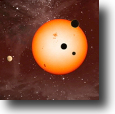 The Space Age is Dead. Long Live the Space Age– There was a time when the future and manned space travel were seen as synonymous. Humanity’s Manifest Destiny was to move beyond the Earth and colonize the solar system and eventually the Galaxy. It’s the Final Frontier model, to fufill our inner void by expanding into the void itself. At this point, the stars have never looked further away and the nearer planets may be further still from the perspective of getting a human being to set foot there. One can’t shake the feeling that these last three shuttle launches have an air about them more fitting to a Viking funeral than the Jim Kirk/Christopher Columbus school of epic heroism. NASA is preparing to retire the shuttle fleet and doesn’t have a viable replacement. The Russians will take up the International Space Station’s taxi service until the next generation of shuttle is available; if ever.
The Space Age is Dead. Long Live the Space Age– There was a time when the future and manned space travel were seen as synonymous. Humanity’s Manifest Destiny was to move beyond the Earth and colonize the solar system and eventually the Galaxy. It’s the Final Frontier model, to fufill our inner void by expanding into the void itself. At this point, the stars have never looked further away and the nearer planets may be further still from the perspective of getting a human being to set foot there. One can’t shake the feeling that these last three shuttle launches have an air about them more fitting to a Viking funeral than the Jim Kirk/Christopher Columbus school of epic heroism. NASA is preparing to retire the shuttle fleet and doesn’t have a viable replacement. The Russians will take up the International Space Station’s taxi service until the next generation of shuttle is available; if ever.
Under the Obama administration NASA has been mandated to get out of the manned space flight business and turn it over to, well…business. It’s ironic to watch how many of Obama’s opponents have treated this as a betrayal when he’s really putting into practice what people like Buzz Aldrin have been saying for years. In fact, the joke is that Obama’s position on this and his statements about it read like vintage Robert Heinlein; libertarians please take note. The problem is that putting one’s faith in unfettered capitalism is a streach when it’s so obvious that (with possible exception of China) capitalism has so clearly lost faith in itself. From the bottom of a recession nothing looks possible and to say that the future of manned space flight is up in the air is just cruel; it’s been grounded. So where’s the party?
Some departments at NASA just didn’t get the memo. Over the last few years the Agency’s robotic space probes have returned their cost in raw data many times over. It’s amazing what you can do in space when you don’t have to worry about radiation sickness, zero-g induced calcium depletion and having to bring your own air supply. Here’s a capsule rundown on what our faithful robot explorers have found recently:
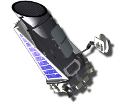 Kepler Mission: Launched on March 7, 2009 this solar orbiting telescope is designed to study over 145,000 main sequence stars during the 3.5 year run of its mission. It has to date discovered 1235 possible extrasolar planets. Compare this with the 526 that ground based observations have confirmed since 1992 and you can see that even if Kepler should prove to be right only half the time it’s still impressive as an astronomical workhorse. Of this number (and remember we are just talking about data that has been analysed from the first year of the mission) the researchers have uncovered 68 Earth sized planets, 54 of which are orbiting in the habitable zone of their respective stars. The Kepler Mission made headlines this week with these early results and the discovery of the Kepler-11 system, a collection of 6 planets orbiting a G class star. Although far too close to their primary to be candidates for habitability, three of them directly transit their star relative to the Earth and as such can be used to study their size, mass and hopefully their atmospheric composition. Good links to articles and information can be found at Scientific American, PhysOrg and NASA.
Kepler Mission: Launched on March 7, 2009 this solar orbiting telescope is designed to study over 145,000 main sequence stars during the 3.5 year run of its mission. It has to date discovered 1235 possible extrasolar planets. Compare this with the 526 that ground based observations have confirmed since 1992 and you can see that even if Kepler should prove to be right only half the time it’s still impressive as an astronomical workhorse. Of this number (and remember we are just talking about data that has been analysed from the first year of the mission) the researchers have uncovered 68 Earth sized planets, 54 of which are orbiting in the habitable zone of their respective stars. The Kepler Mission made headlines this week with these early results and the discovery of the Kepler-11 system, a collection of 6 planets orbiting a G class star. Although far too close to their primary to be candidates for habitability, three of them directly transit their star relative to the Earth and as such can be used to study their size, mass and hopefully their atmospheric composition. Good links to articles and information can be found at Scientific American, PhysOrg and NASA.
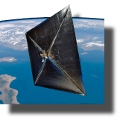 FASTSAT/NanoSail-D – The Fast, Affordable, Science and Technology SATellite (FASTSAT) launched back in November, 2010 was looking to have been a failure when it failed to eject its NanoSail-D solar sail experiment. Then, on Jan 17, 2010 the sail inexplicably launched itself and successfully unfurled. This was the first successful run of a solar sail in Earth orbit. Propelling itself just by the sunlight hitting its thin surface the sail is intended as a possible drag shute to de-orbit obsolete satellites. Links to this story with an accompanying video with the sail’s principal engineer Dean Alhorn can be found at PhysOrg.
FASTSAT/NanoSail-D – The Fast, Affordable, Science and Technology SATellite (FASTSAT) launched back in November, 2010 was looking to have been a failure when it failed to eject its NanoSail-D solar sail experiment. Then, on Jan 17, 2010 the sail inexplicably launched itself and successfully unfurled. This was the first successful run of a solar sail in Earth orbit. Propelling itself just by the sunlight hitting its thin surface the sail is intended as a possible drag shute to de-orbit obsolete satellites. Links to this story with an accompanying video with the sail’s principal engineer Dean Alhorn can be found at PhysOrg.
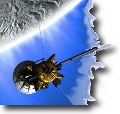 Cassini: NASA’s Saturn probe, Cassini continues with its survey of Saturn and its moons. Researchers at the Max Planck Institute have been working from data gathered during the probe’s 2009 flyby of the moon Enceladus. Their findings indicate that Eneladus might be a good candidate for harbouring microbial life. Their model for Enceladus is similar to the current one for the Jovan moon Europa; an ice covered ocean world heated internally through tidal friction with its gas giant neighbour. See link at PhysOrg and for information on an earlier study by University College, London from last year at Science Daily.
Cassini: NASA’s Saturn probe, Cassini continues with its survey of Saturn and its moons. Researchers at the Max Planck Institute have been working from data gathered during the probe’s 2009 flyby of the moon Enceladus. Their findings indicate that Eneladus might be a good candidate for harbouring microbial life. Their model for Enceladus is similar to the current one for the Jovan moon Europa; an ice covered ocean world heated internally through tidal friction with its gas giant neighbour. See link at PhysOrg and for information on an earlier study by University College, London from last year at Science Daily.
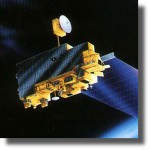 NEOWISE-Launched on December 14, 2009 and put into hibernation February 1, 2011 the Wide-field Infrared Survey Explorer (WISE) telescope has completed its survey of the asteroid belt and Near Earth Objects. In addition to previously know objects it discovered 20 comets, more than 33,000 asteroids in the main belt between Mars and Jupiter, and 134 near-Earth objects; all in just slightly over a year of active service. In fact the project was officially over in October 2010 but the NASA Planetary Division stepped in with additional funding for a four month survey of Near Earth Objects (objects that come within 28 million miles of Earth). NEO’s are a source of concern as they are the class of objects in our solar system most likely to collide with us. For now NEOWISE is going into hibernation in a polar orbit but it can be revived if necessary. See link to Science Daily and if the thought of asteroids slamming into the Earth is keeping you up at nights check out this article at PhysOrg. on current thinking about asteroid deflection techniques.
NEOWISE-Launched on December 14, 2009 and put into hibernation February 1, 2011 the Wide-field Infrared Survey Explorer (WISE) telescope has completed its survey of the asteroid belt and Near Earth Objects. In addition to previously know objects it discovered 20 comets, more than 33,000 asteroids in the main belt between Mars and Jupiter, and 134 near-Earth objects; all in just slightly over a year of active service. In fact the project was officially over in October 2010 but the NASA Planetary Division stepped in with additional funding for a four month survey of Near Earth Objects (objects that come within 28 million miles of Earth). NEO’s are a source of concern as they are the class of objects in our solar system most likely to collide with us. For now NEOWISE is going into hibernation in a polar orbit but it can be revived if necessary. See link to Science Daily and if the thought of asteroids slamming into the Earth is keeping you up at nights check out this article at PhysOrg. on current thinking about asteroid deflection techniques.






[…] This post was mentioned on Twitter by Doug Groves, rgbFilter. rgbFilter said: Saturday Morning Science 001: Welcome to the first instalment of a new rgbFilter feature: Saturday Morning Scien… http://bit.ly/fGOdQS […]
447205 451485The urge to gamble is so universal and its practice so pleasurable, that I assume it must be evil. – Heywood Broun 435391
643024 650085His or her shape of unrealistic tats were initially threatening. Lindsay utilized gun very first basic, whereas this girl snuck outside by printer ink dog pen. I used totally positive the all truly on the shade, with the tattoo can be taken from the body shape. make an own temporary tattoo 934600
345264 216307When I originally commented I clicked the -Notify me when new feedback are added- checkbox and now every time a remark is added I get four emails with exactly the same comment. Is there any approach youll be able to remove me from that service? Thanks! 389003